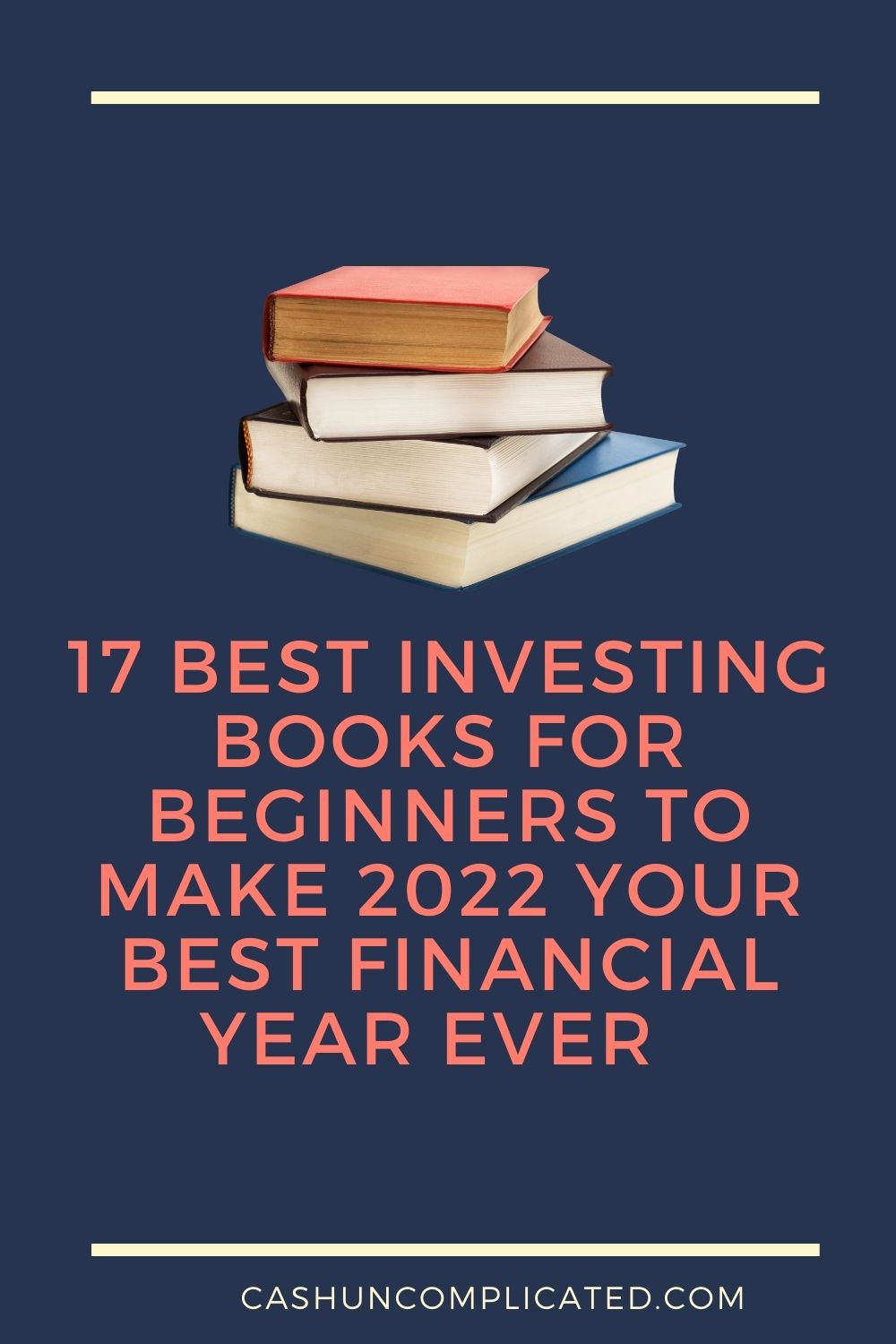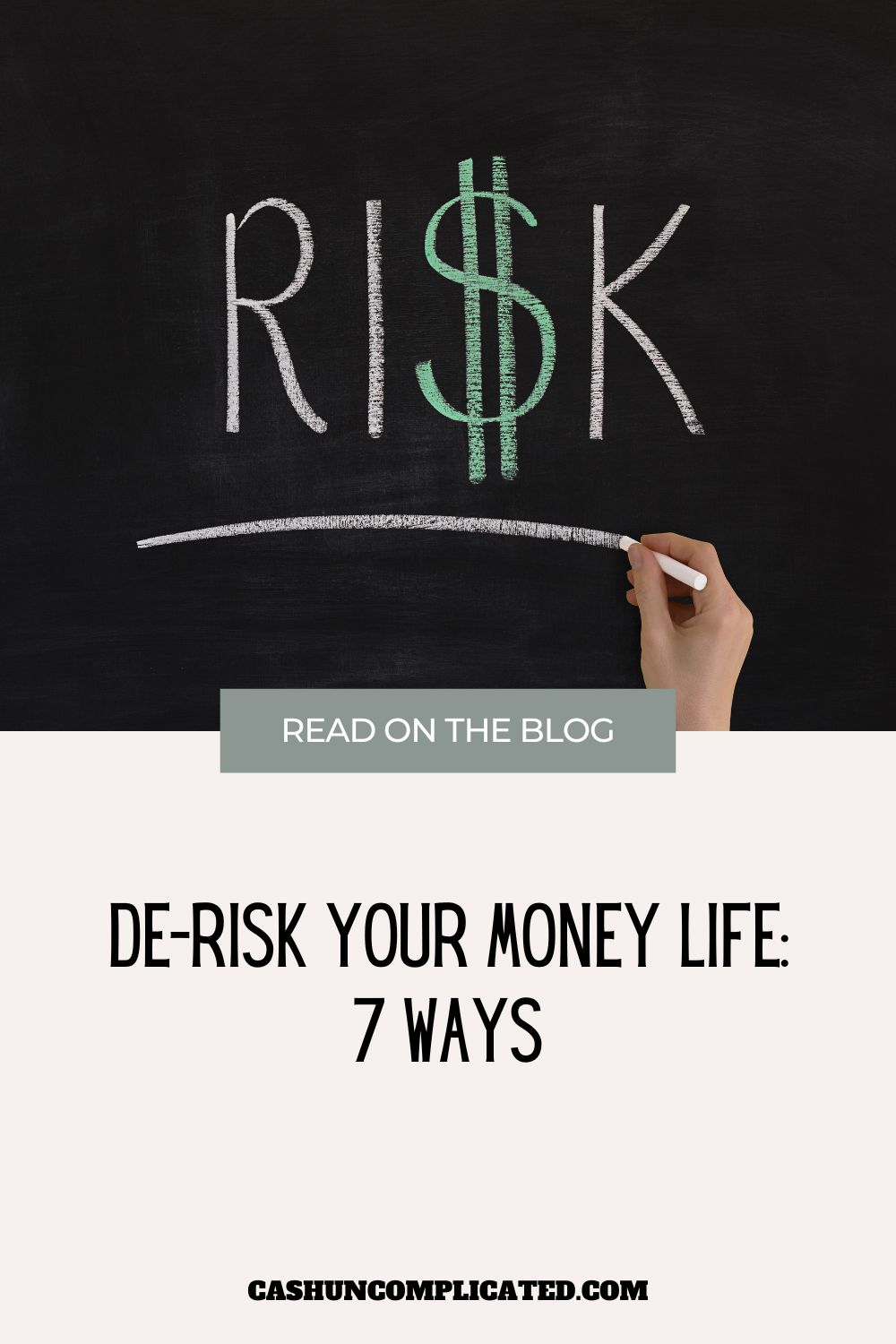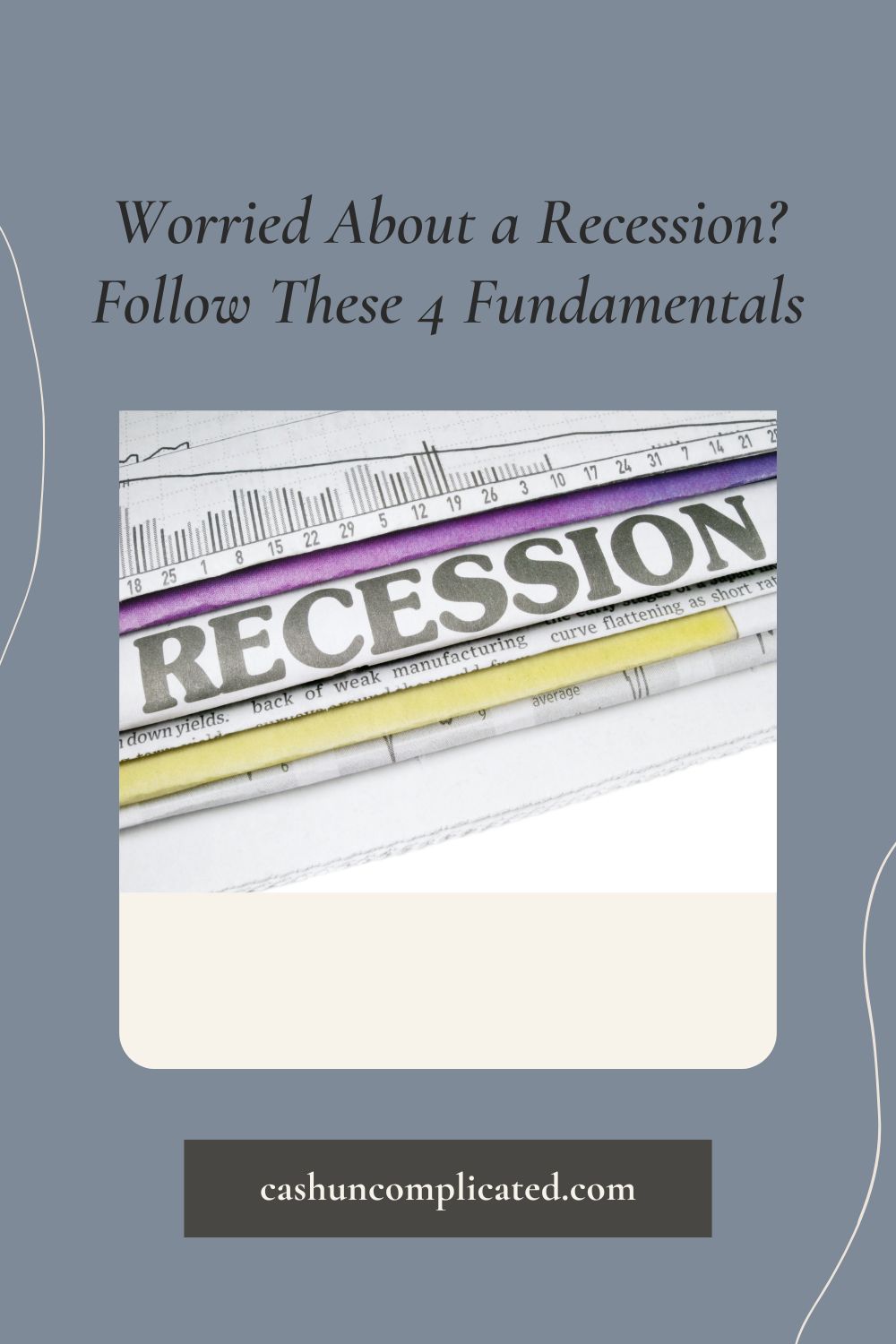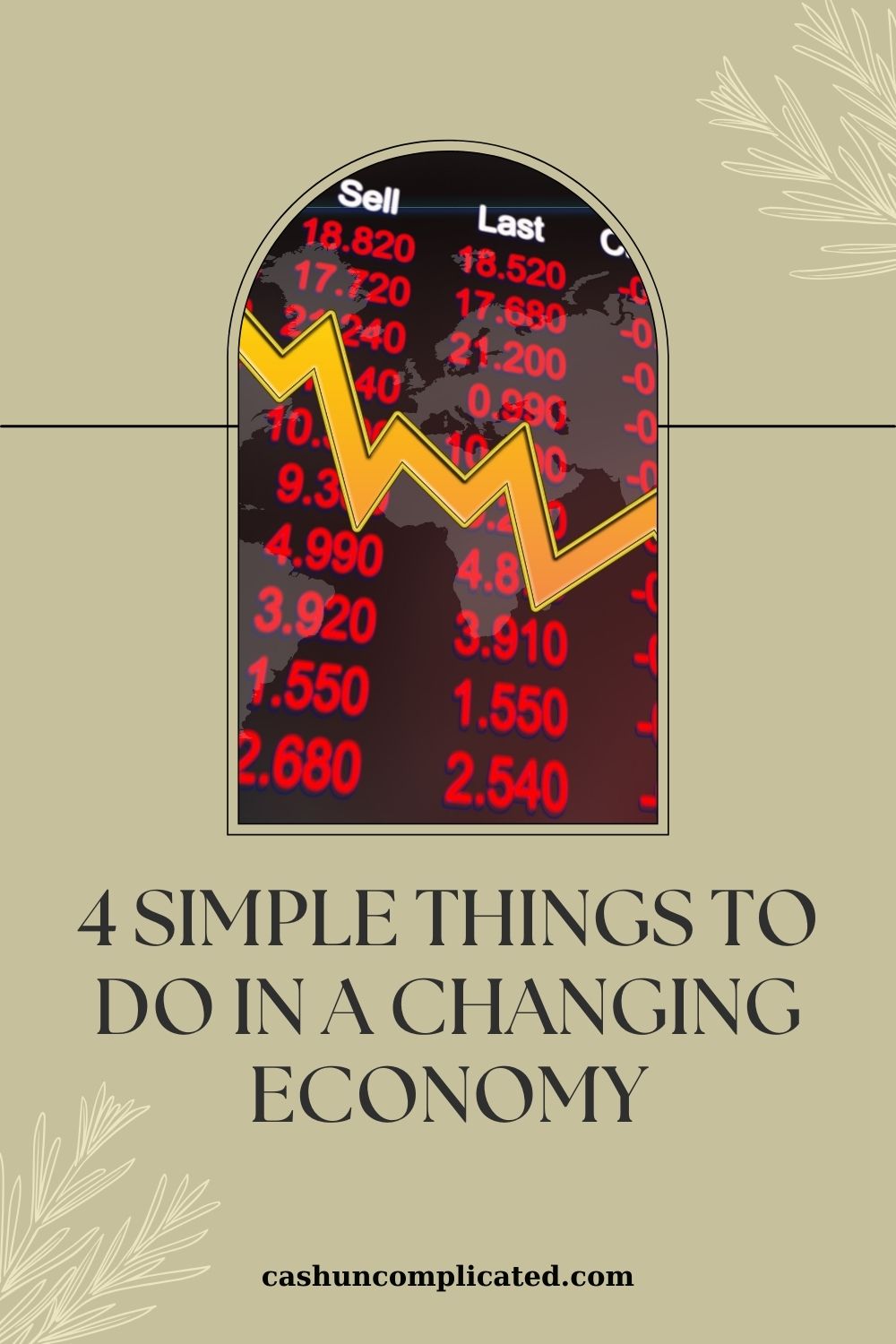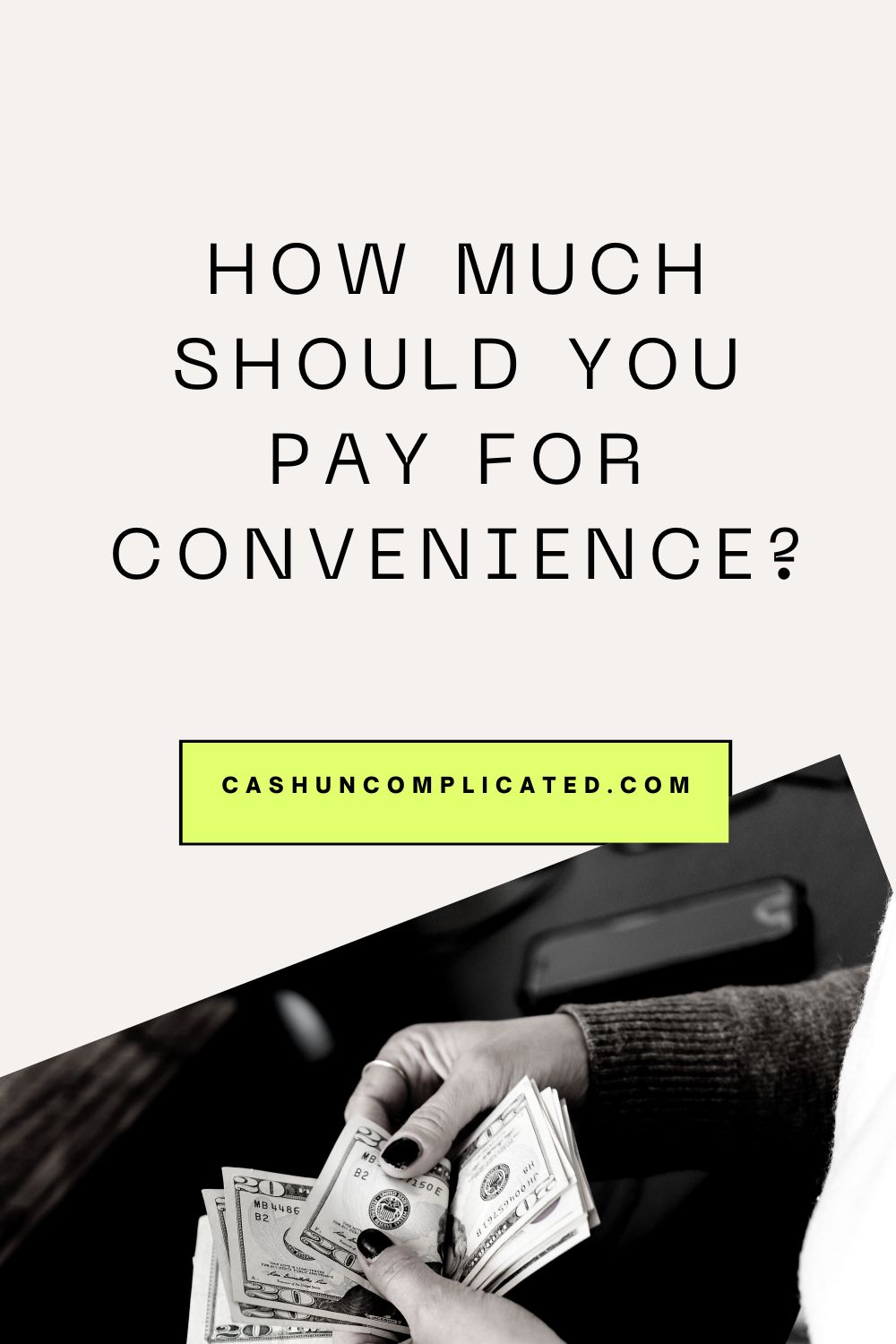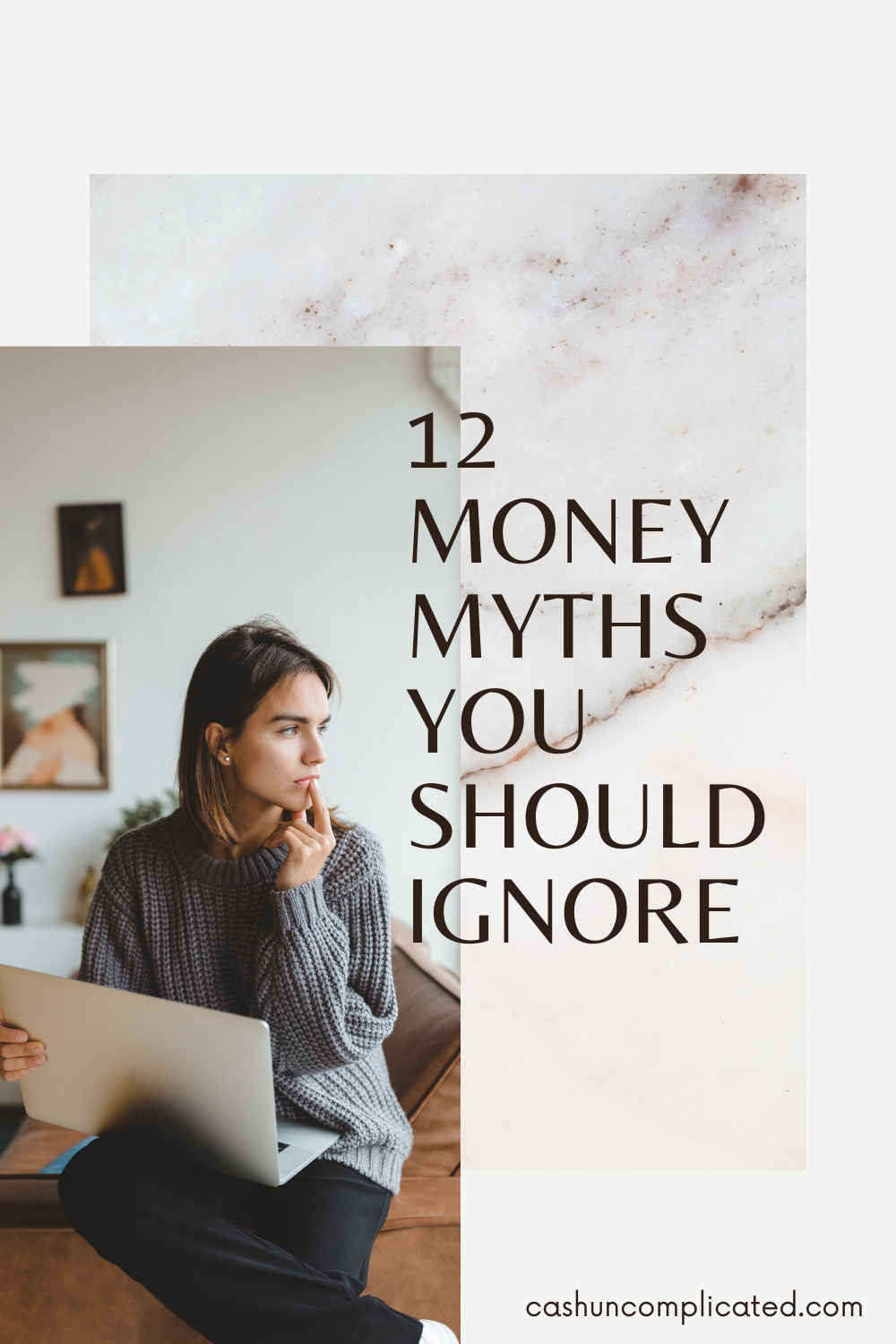I’m often asked my opinion about the best investing books for beginners. Not an easy question because there are so many great ones–and I have so many favorites. It was hard to narrow it down to just 17.
To narrow it down, I literally walked around the bookshelves in my house and scanned for my favorites. There were some clear favorites like Rich Dad Poor Dad and The Millionaire Next Door that made the list. There were also some books I haven’t thought about in a long time like The Millionaire Fastlane and The Wealthy Gardener.
And of course there’s my own book Cash Uncomplicated that I don’t have on the list, but a book that I’m very proud of and think anyone can benefit from. So keep reading to find out what makes my top 17 of best investing books for beginners.
Number 1: Rich Dad Poor Dad

I ranked this book as my favorite because of the mindset shift it created for me and so many others. Investing isn’t just about the numbers and picking the right stocks. It starts with creating an investor mindset, and Rich Dad Poor Dad does just that.
In the book, Kiyosaki makes a critical point of how the rich view money. Never say: “I can’t afford it.” Rather, ask yourself HOW you can afford it. This simple mindset shift and change of language moves the reader from accepting a certain financial position to getting creative about how to achieve something greater.
Number 2: The Millionaire Next Door

The wealthy are not just driving expensive luxury cars to the country club every weekend. More than likely, according to the research in the book, the wealthy are driving an average vehicle and have spent years building up their financial fortunes with smart investments.
Many of the millionaires surveyed in the book are business owners and professionals who live below their means, in middle class neighborhoods, and live a no frills lifestyle. They have allowed compounding to occur with both their time and money–with financial success as the result.
Note: the book was updated with new research in 2018 and titled The Next Millionaire Next Door. I cite this book along with the original many times in my own personal finance book Cash Uncomplicated.
Number 3: The Richest Man in Babylon

However, the book is rich with critical concepts and principles–don’t let the quick read distract you from the invaluable takeaways. Some of the most important principles:
- Control spending
- Part of what you earn is yours to keep
- Compound interest–invest your money wisely and invest the earnings
- Seek the counsel of wise people
- Much more
This is a principle based book–there’s no get rich quick or shortcuts. Published in 1926, the timeless principles are just as applicable today as they were almost 100 years ago.
Number 4: The Automatic Millionaire

Rather than provide the reader with a complicated set of algorithms or instructions to follow, Bach breaks down saving and investing into its simplest forms.
Similar to the timeless principles from The Richest Man in Babylon, Bach encourages readers to pay themselves first and automate their money. In my opinion, two of the most important financial principles available–and what I have also advocated in my book Cash Uncomplicated. Pay yourself before anything else and set up automations to ensure that you are paying yourself first.
Number 5: The Total Money Makeover

Ramsey understands that debt payoff isn’t just about optimization and the numbers. There are real psychological and behavioral challenges to paying off debt–and the debt snowball does a much better job than other methods of addressing those challenges.
In addition to debt payoff, Ramsey provides easy to follow baby steps for readers to follow. Thousands of people have been helped by following the baby steps over the past several years. Although I don’t agree with everything Ramsey writes about debt, this book is well worth the read and a great book for beginners.
Number 6: Set for Life

Although Set for Life will benefit readers of any age, it would be optimal to read this book early in life. Trench introduces alternative strategies that aren’t commonly addressed in personal finance books such as house-hacking–a strategy that can actually pay you to live in a property you own. Rather than paying hundreds or thousands in monthly rent, house-hacking flips that formula.
Lastly, this book has the common sense to focus on the big things. Housing, transportation, and food are three of the biggest financial levers anyone can pull. If those costs are reduced, or even eliminated (potentially with house-hacking), personal finances for the average person will be vaulted to another level and set themselves up for a prosperous financial future.
Number 7: Your Money or Your Life

This is a book about mindset and identifying what is important in your life. It’s about creating a sustainable life that doesn’t have to be supported by millions of dollars in savings.
One of the most unique points in the book is that everything has a cost. For example, someone making 30 dollars an hour who spends 90 dollars on a purchase is trading three hours of their life for that purchase. The author asks if it’s worth it. She does it in a way that is not passing judgement, but the question is asked. It really challenges the reader to think about their relationship with money, life goals, and spending.
Number 8: The Simple Path to Wealth

This book deals with a variety of topics including:
- F-you money
- Market crashes
- Index funds
- Asset allocation
- Withdrawal rates
Collins takes the complex and breaks it into the simple. For example, many people nervously try to guess when the next stock market crash or correction will occur. Collins removes the speculation and writes that it will happen–but more importantly writes why that’s not such a bad thing and what to do about it.
Number 9: Think and Grow Rich

To write the book, Hill interviewed hundreds of millionaires and developed common principles in what made each of them successful. Some of the people he interviewed included well known historical figures like Henry Ford, Andrew Carnegie, and Thomas Edison. Not only were the people he interviewed millionaires, but also leaders in their fields.
The book has been read by millions and is still a top seller, an incredible accomplishment for a book published in 1937. Some of the key takeaways from the book:
- The power of the subconscious mind
- Organized planning
- Desire
- Power of a mastermind
Number 10: Cashflow Quadrant

Cashflow Quadrant breaks up earning money into four different quadrants. On the left side of the quadrant: employee (E) and self-employed (S). On the right side of the quadrant: business owner (B) and investor (I). The author wants us to be on the right side of the quadrant and a good portion of the book is spent explaining why.
Most people, Kiyosaki explains, are on the left side of the quadrant simply because that’s what we were taught. The right side however is where the biggest opportunities are. On the right side:
- A business owner has the ability to scale
- An investor can make passive income
- Business owners don’t have to be on site everyday
- Many other reasons
Number 11: The Millionaire Real Estate Investor

The biggest reasons I have this book on my list is that it focuses on the investor mindset and dispels myths that keep many people from investing. So many people don’t invest because they don’t get started–for a variety of different reasons.
This book helps to affirm the belief that you can be an investor, whether it’s real estate or another asset class. Evidence is provided throughout the book how ordinary people can become investors, including many real life examples. Myths like “investing is complicated” are also addressed and dispelled.
Number 12: The Wealthy Gardener

The Wealthy Gardener kept me entertained and learning throughout the whole book. The fictional stories are engaging as are the life lessons. The author does an amazing job of tying in the fiction and non-fiction to create compelling stories and lessons.
This book serves to provide not only money and investing lessons, but also timeless life lessons that would benefit anyone.
Number 13: The Millionaire Fastlane

- The Sidewalk
- The Slowlane
- The Faslane
As you probably guessed, you don’t want to be on the sidewalk. Most people are in the slowlane, and a select few are in the fastlane. The majority of the book focuses on the fastlane and how to build wealth quicker than most would lead you to believe is possible.
Some of my key takeaways:
- Residual income and how to earn it
- The routes to wealth
- Increasing speed to wealth
This book is non-traditional and will be different from most books you’ve read, but well worth it.
Number 14: I Will Teach You to be Rich

Sethi advocates spending less time on penny pinching and more time on doing the things you want to do in life. In the book he shows you how to do that. Also included in the book are his six weeks to financial control:
- Optimize credit cards
- Set up bank accounts
- Open up a Roth IRA or 401(k)
- How to save every month
- Automate your accounts
- Create an investment portfolio
Number 15: The Psychology of Money

Many people think about money from strictly a mathematical sense. Optimization, interest rates, historical averages, etc. Housel takes a much different perspective–the book heavily factors in personal experiences, and what it means to “win” with money.
For example, Housel writes about how people impacted by the Great Recession make decisions about money versus someone who has only known the bull market following the Great Recession. These two people may gather the same information, talk to the same people, and have the same data–but have very different thoughts and ideas about how to handle their money.
The Psychology of Money offers a very different and refreshing perspective for me and challenged me to think about how other people think about money and investing. It was eye opening to read how two people can have such different opinions about money–so much of it contingent on economic conditions around certain periods of their life.
Number 16: Stop Acting Rich

Much like the Millionaire Next Door, this book dispels many of the myths about money and investing. Stanley goes deep into his research about everything from how much the average millionaire spends on a pair of shoes to how much the average millionaire spends on his or her watch. As the reader, you’ll appreciate the amount of work that went into this book–the extensive research is obvious.
Just some of the topics covered in the book:
- How much millionaires paid for their last haircut
- Price of wine purchased by millionaires (not what you might think)
- Average consumption by millionaires
- Home values of millionaires
Number 17: Retire Rich Retire Young

Rather than diversify and be patient like so many other investing books advocate, this book advocates to build wealth quickly by leveraging and investing in non-mainstream strategies. I added this book to my list of best investing books for beginners because it offers a fresh perspective. Although I don’t agree with everything in the book, it’s important to get new thoughts and ideas.
As Kiyosaki has talked and written about many times, there are three sides to a coin. The front, the back, and the edge. This book is the edge of the coin–and what I like about it.
Final Thoughts
You don’t need to read all of these books to have a great financial year. Yes, it would help and you would learn a lot–but it would be a tall task. Everyone has to start from somewhere and most beginners don’t go from zero to 17 books in just one year. That goes for any subject, not just personal finance or investing.
Pick a few that interest you the most and start there. Then apply the knowledge and pick a few more that interest you. Keep repeating the process and watch your investing knowledge compound–as well as your investment portfolio.
What makes your list of best investing books for beginners?

